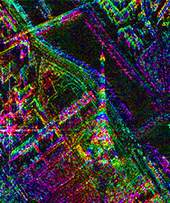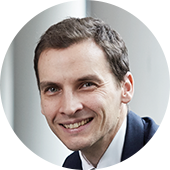Did you know that ONERA is one of the oldest research centers in Paris-Saclay? Founded in 1946, it set up in Palaiseau, one of the communes that make up the Plateau, in 1952. The site director, Bénédicte Fighiera, invites us inside. She tells us about its development, and that of the Paris-Saclay ecosystem.
– First of all, could you tell us where we are?
The ONERA site is particularly historic since it occupies one of the oldest forts to have formed part of the fortifications built following the 1870 defeat to defend Paris against further invasions. In fact, the defensive structure was never used. It suffered from the discovery of a new gunpowder which made a mockery of the thickness of the walls. In an irony of history, the fort was later used as a barracks by the Germans during the Second World War. The State then allocated it to ONERA, founded in 1946, which has effectively occupied the site since 1952.
– Which therefore makes ONERA one of the longest-standing players at Paris-Saclay…
That’s right. But perhaps also one of the most understated. And with good reason. Historically, its activity was related to research into propulsion systems. This site had the advantage of the space available (19 ha) and semi-underground tunnels in which the test facilities could easily be installed. It also had the advantage of being sufficiently isolated from the surrounding population, thus limiting noise pollution from testing.
At the end of the 80s, it was expanded with new constructions, and a new building was completed in 2010, which enabled us to double our workforce with 600 people now working here.
– Since setting up here, the range of activities has widened considerably…
ONERA’s mission is to cover scientific and technical research in all aerospace domains, whether that be airplanes and helicopters or rockets, missiles and drones. We are interested in everything that flies, with a preference – and this is one of the things that sets us apart – for a multi-disciplinary approach: our research relates to materials (to make an airplane more economical or stealthier, for example), safety issues (in terms of piloting), localization (we are involved in the design of radars) and all optical activities, to better see or be seen.
– How do you conduct this research? Do you form partnerships?
Yes we do. ONERA is a public institution of industrial and commercial nature, but 60% of our budget comes from contracts (which is exceptional in a public research context). Although we are under the supervision of the Ministry of Defense, we also have considerable civilian activity. We even have partnerships with companies from outside the aeronautical sector, such as the SNCF for example, for which we are developing suitable drones for use in the surveillance of their railway equipment.
– What part do you intend to play in the Paris-Saclay ecosystem?
ONERA is a founder member of the Université Paris-Saclay and a member of the Polvi business club. Associating with other players at Paris-Saclay is essential.
– How does the ecosystem of Paris-Saclay contribute to the development of ONERA?
ONERA is an applied research center and has therefore always worked together with manufacturers (both in the aeronautical and other sectors: we have, for example, just reached a cooperation agreement with Safran, which has just set up on the Plateau de Saclay), but also with SMEs. We also work with research organizations, prestigious graduate schools and universities. The environment at Paris-Saclay only makes these links stronger.
– What is your view on the emergence of start-ups, relative newcomers compared to ONERA?
We have been working for several years with innovative companies, and have even generated our own spin-offs. I am referring in particular to Protip Medical, which was the first in the world to develop an artificial larynx from an ONERA innovation: porous titanium. There’s also Blue Industry and Science, which benefited from our technology transfers on gas analyzers.
– Is calling yourselves “The French Aerospace Lab” a way of getting involved in the field of innovation?
That name goes back further than you might think. I think in fact that we were one of the first in France to use it. Remember, ONERA is a French acronym for the National office for aerospace studies and research, a name which, it has to be said, is difficult to “sell” outside of France! It was important though for our activities to be understood by our potential partners. Hence the choice of “Lab”, which has the advantage of being understood by all English speakers.

